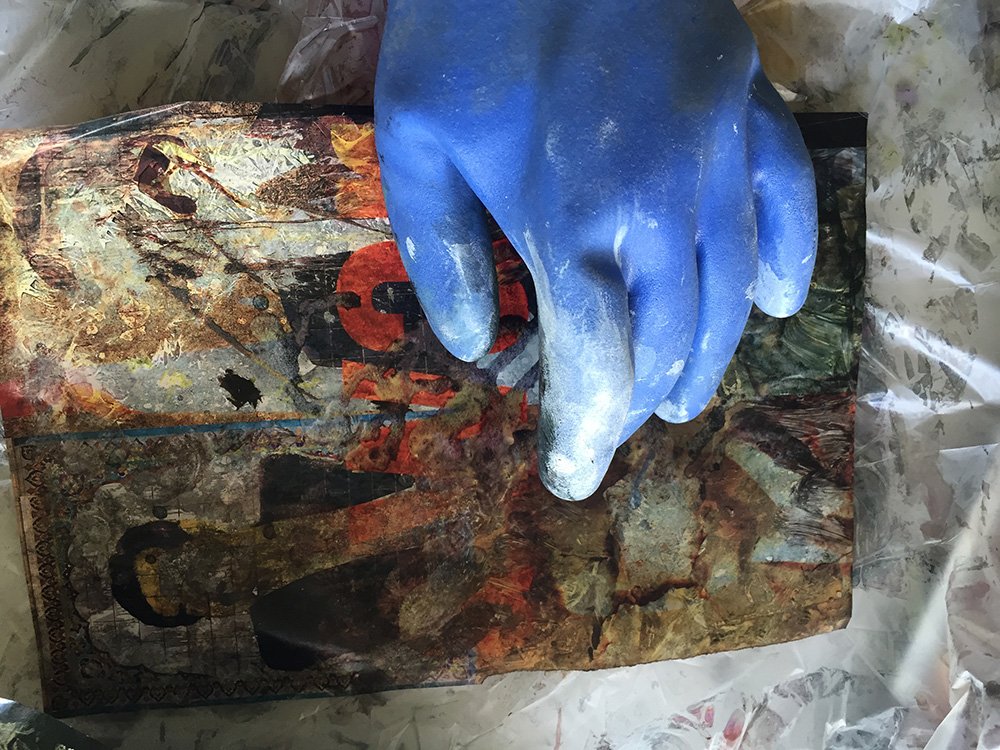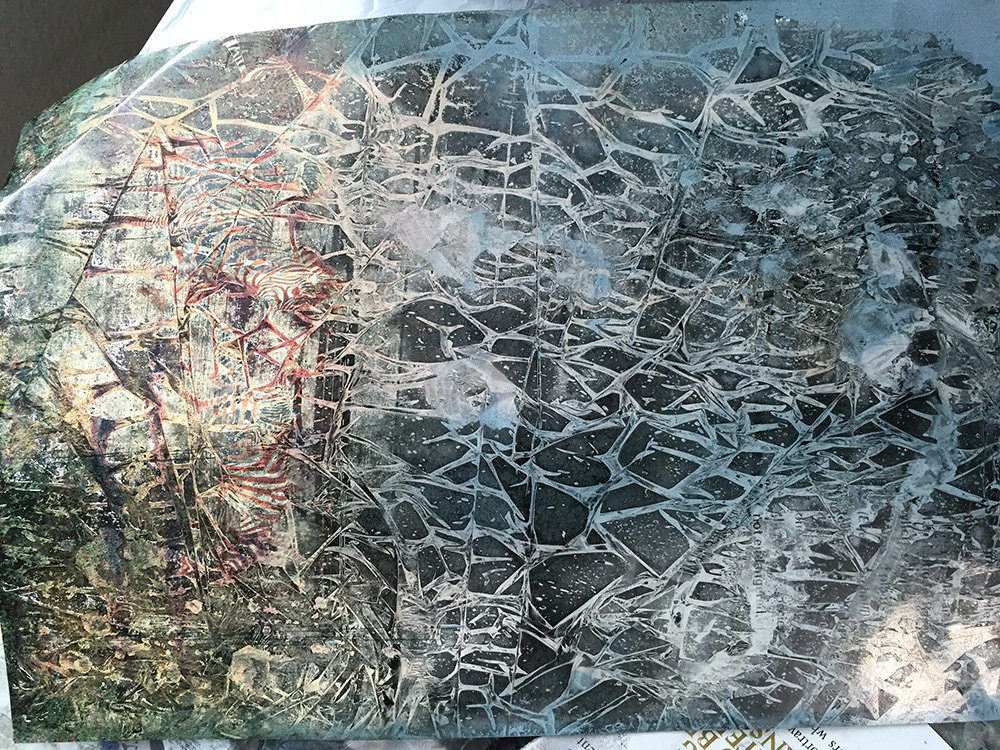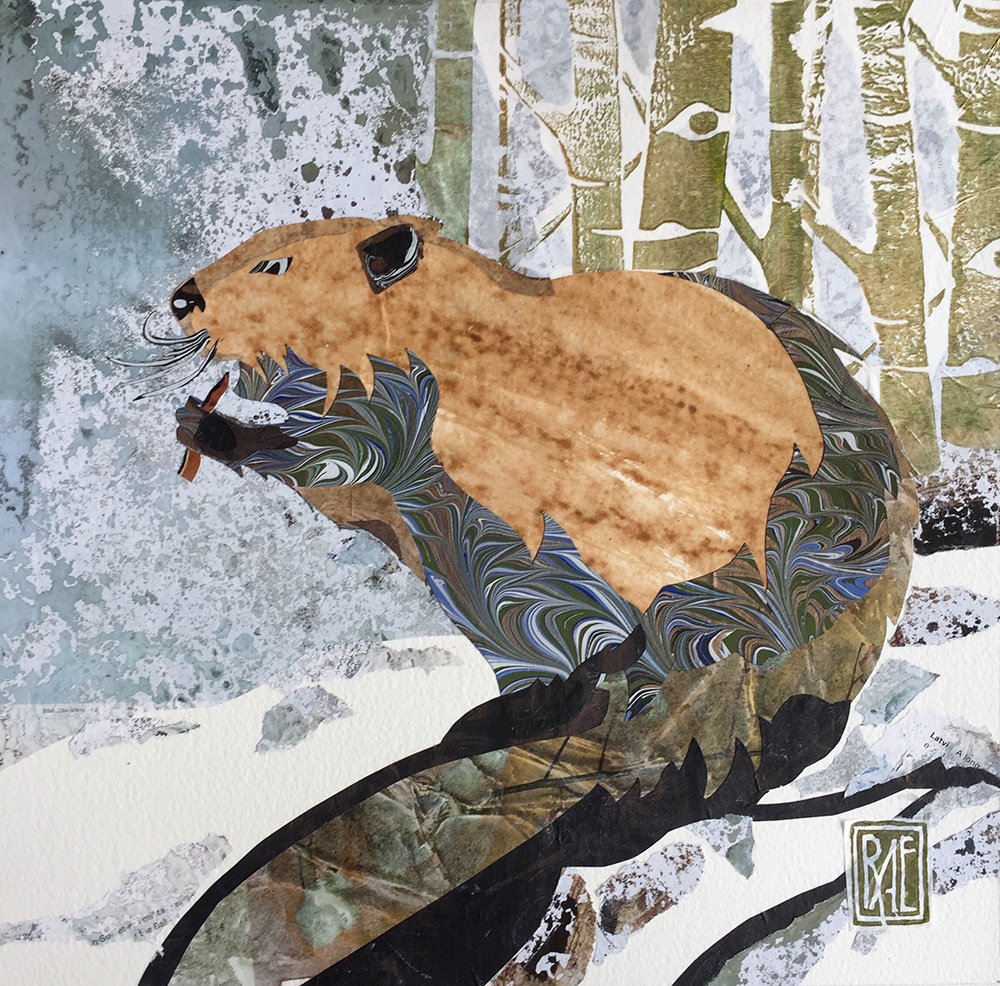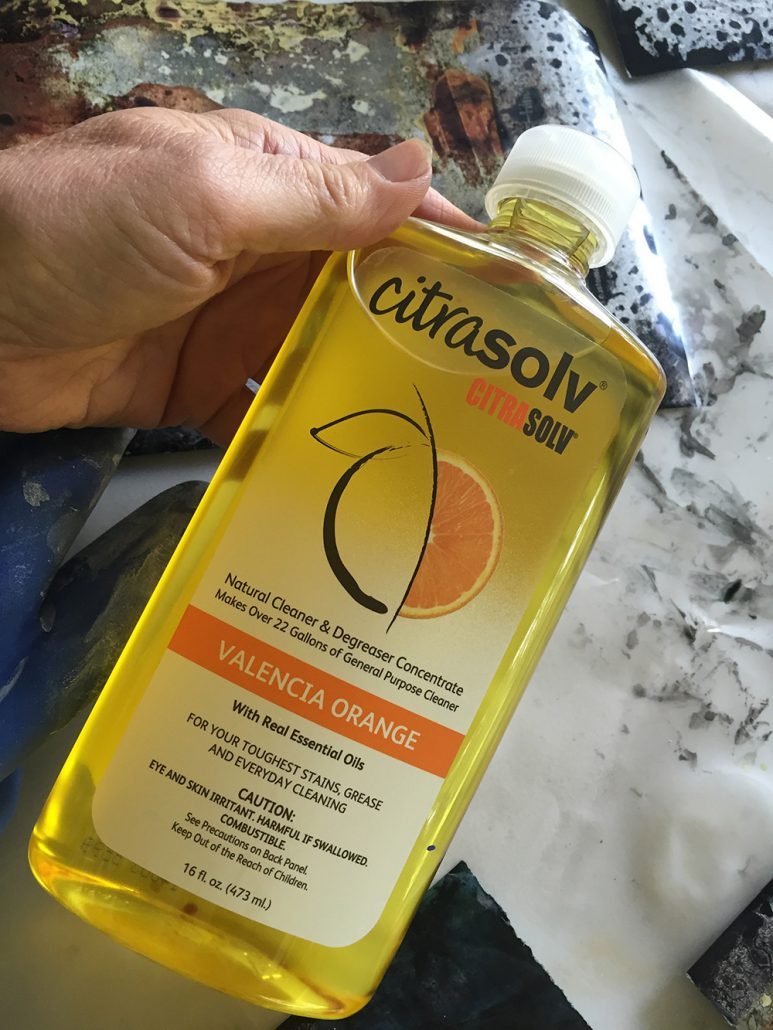QUICK & BEAUTIFUL PAPER
Here is a simple way to make gorgeous, vividly colored art papers. It’s so easy! Like unwrapping a present, you never know just what you’ll get. Some of them will be superbly colorful but make plenty of plain, neutral papers too. And be sure to make papers in light, medium and dark values. For a very small investment you will end up with a good supply of unique material for collage making.
YOU WILL NEED
- Citrasolve concentrated cleaner
- Plastic Wrap or other thin plastic
- Worked table covered with plastic
- Plastic gloves
- National Geographic Magazines

(they use a special type of ink — other magazines do not work. Also the oldest magazines do not work but any after 2000 should)
FOLLOW THESE STEPS
1. Looking through your magazines and tear out pages with large, brightly colored photographic images and some neutral pages too. The color will influence the outcome, so try a variety.
2. Prepare your work area and put on the gloves. Open windows if working indoors so fumes will dissipate. While citrasolve is a natural product made from orange peels, it is still a solvent of sorts. Work outside if you can.
3. Pour a half to full teaspoon of citrasolv on a page and move it around with your fingers to coat the entire surface.

Place another page on the top, with desired surfaces together. You can create a whole stack of pages with two coated surfaces together, or coat both sides of the page but then you’ll have to choose your favorite side!
Alternately, place the page with the wet citrasolv side facing down on thin plastic or plastic wrap.
4. Continue to add citrasolve to pages until they are all coated, then let them soak it up for a few minutes. The citrasolv will eventually dissolve the ink into a liquid again which allows it to move.
5. Pull the pages apart — sometimes they look a lot like an old Polaroid print.

If the ink still appears stable, rub gently with your fingers to lift and blur the photo images. Usually I make sure they are transformed enough that the original image disappears, though I sometimes leave bits of the original content. If you’ve allowed plenty of time for the ink to soften and it still isn’t moving, add a little more citrasolv and repeat.
6. You can vary the texture in the pattern by continuing to play with them. Return them to the plastic or place them face to face.
7. Allow your papers to dry outside in the open air, when possible. I usually pull them apart before they dry completely, but when you let them dry before you pull them apart you’ll get another patterning effect with white showing where the ink sticks together and the paper tears.
Pages laid on plastic will often have a crystalline pattern similar to this one.

Pages that are placed together often will have a bubble type pattern like this one.

Sometimes I leave a little of the original image show, other times I let it completely dissolve.

Smart Beaver —
I just finished this collage painting using several kinds of collage papers that were all created by me. The sky and tail are citrasolv paper. The aspens in the background are stamped with a hand made stamp using acrylic paint rolled onto a gelli plate, then printed onto deli paper. The brown body is paint that is applied with a sponge roller and the rest of the body and the facial features are marbled black craft paper. The signature chop is also stamped with watercolor on deli paper, varnished and applied.
This painting will be available for purchase as part of the BEAVER TALES art show at the Oregon Zoo, opening September 1. The show highlights the role this animal plays in environmental regeneration.
Other ways to make art papers for collage
- Stamping
- Gelli Plate printed art papers
- Foam Roller printed papers
- Marbled papers
You can see the effect of plastic on the pattern. Try using plastic bubble wrap for an interesting texture.
Here’s a collage portrait demo from last year’s France workshop. It uses a variety of both torn and cut papers, the background is cirtasolv paper.





